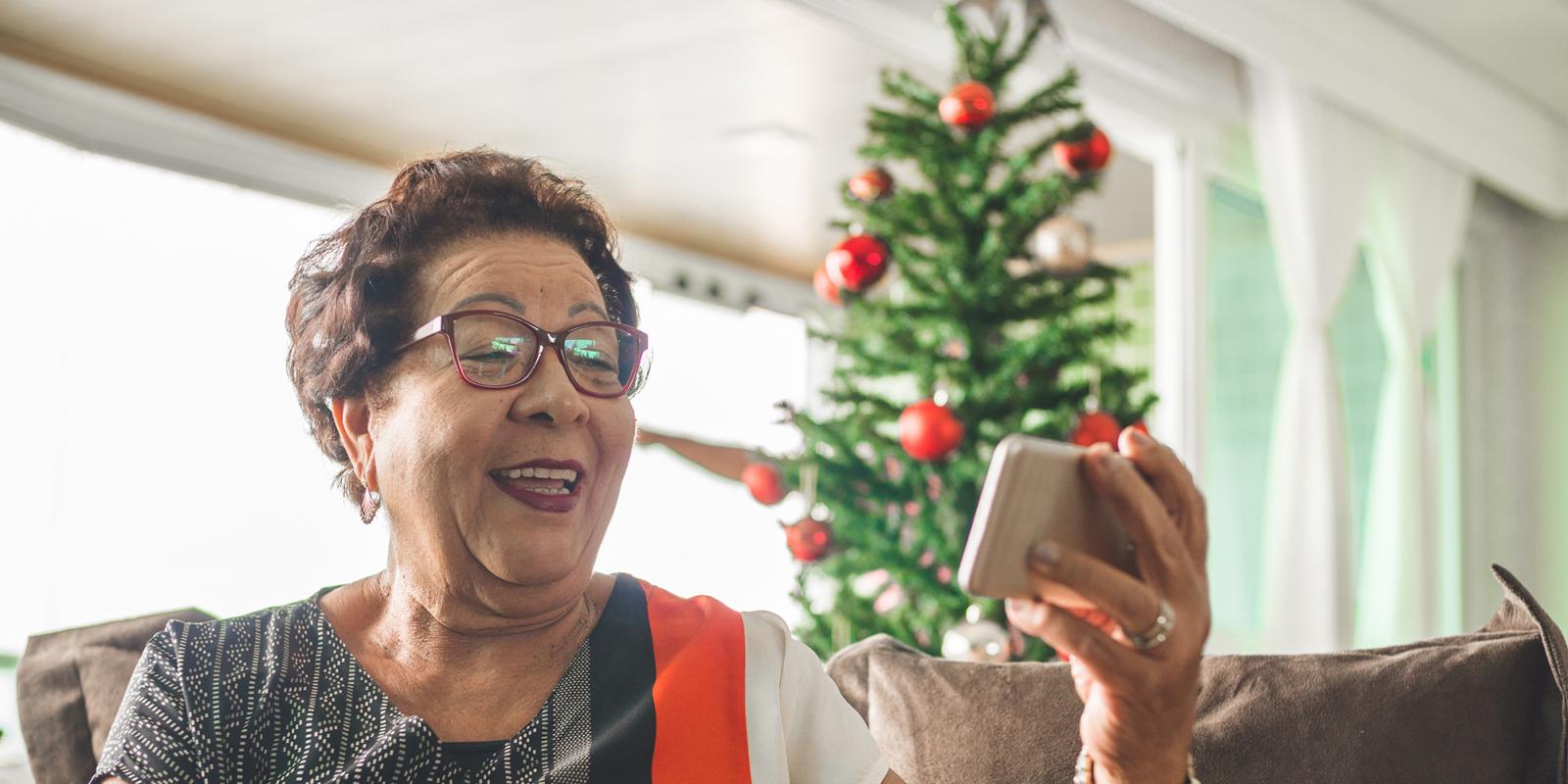When “the weather out there is frightful,” what’s better than making plans with your friends and family?
Increasing vaccination rates have offered a much needed break from the fear of serious illness and made many people feel more comfortable gathering in person. As temperatures drop, however, and we turn to more indoor activities, we should remain aware of potential COVID-related risks. Emergence of the omicron variant also has further highlighted the need for caution. For some, this may mean foregoing in-person gatherings again and modifying plans in favor of staying at home.
Yet the prospect of spending another winter season socially distanced poses its own set of health risks. Past studies have found links between social isolation and many health threats, like higher risk of heart disease, stroke and even death, according to the Centers for Disease Control and Prevention (CDC).
Remember, though, you can take steps to boost your connections with others and foster more joy, all from the comfort of your home. AARP and the Global Council on Brain Health (GCBH) have collected many of those resources in one spot in our recently published guide called “Boosters for Joy: A Guide on Ways to Connect.” The GCBH built on their previously published COVID-19 report, focusing on recommendations that might help adults to better deal with social isolation and loneliness and foster better brain health.
Our aim is to help you boost your social connections and joy during these challenging times, no matter where you live.
Why Social Isolation Is Bad for Our Health
An AARP-supported study from the National Academies of Sciences, Engineering, and Medicine (NASEM) on the health risks from social isolation produced some especially striking results. Social isolation was associated with about a 50% increase in risk of dementia. Having few social relationships was linked to increased risk of heart disease (29%) and stroke (32%), and loneliness was associated with notably higher rates of depression, anxiety and suicide. A large-scale experiment by Alcaraz et al. (2019) found that outcomes of social isolation increase risk of premature death from every cause and for every race.
Another study showed that insufficient social connection may increase patient health risks as much as smoking 15 cigarettes a day or having an alcohol use disorder (Holt-Lunstad, 2015). The same researchers also found that loneliness and social isolation can harm a patient’s physical and mental health more than twice as much as obesity (Holt-Lunstad, 2015).
‘Approximately half of individuals ages 60 and older are at higher risk of social isolation.’
Social isolation and loneliness also represent common concerns and often disproportionately impact older adults and other vulnerable populations (CDC, 2020; Hawkley and Kocherginsky, 2018). The 2020 NASEM study indicated more than a third of adults ages 45 and older feel lonely, and nearly a quarter of adults ages 65 and older are socially isolated. Another found that approximately half of individuals ages 60 and older are at higher risk of social isolation, and a third will experience some degree of loneliness later in life (Landeiro et al., 2017).
Loneliness also appears to be an epidemic for people of all ages during the pandemic. A survey conducted by Cigna demonstrated even more worrisome results for younger adults, with individuals younger than age 50 more likely to report loneliness than older generations. In all, 79% of Generation Z and 71% of Millennials reported feelings of loneliness, versus 50% of Baby Boomers.
Given functional limitations associated with aging, though, such as living alone, chronic illness, loss of hearing and eyesight and low support from friends and family, older adults are often more likely to face harm from loneliness and social isolation (CDC, 2020; Hawkley and Kocherginsky, 2018). And the COVID-19 pandemic has increased the number of isolated older adults, including community-dwelling adults, nursing home residents and others (Wu, 2020).
Combatting Social Isolation and Loneliness
Research has pointed to the benefits of programs that bolster social connections. A study by Johnson et al. (2020) examined the impact of joining a choir on feelings of loneliness among older adults and found that choir members experienced significantly greater improvements in loneliness and interest in life.
Studies looking at intergenerational programs that involve students spending time and building relationships with older people have similarly shown promising impacts on relieving feelings of loneliness (Annear et al., 2017; Blais et al., 2017; Murayama et al., 2014). A systematic review of the benefits of intergenerational interactions between youth volunteers and long-term care residents showed that participants reported positive experiences interacting with students and improved well-being overall (Blais et al., 2017).
Intergenerational volunteer programs can reduce risk of social isolation and cause a greater sense of meaningfulness.
Another study found that intergenerational volunteer programs were associated with a greater sense of meaningfulness, which decreased adults’ risk of experiencing social isolation and loneliness (Murayama et al., 2014). Technological interventions such as web-based communication have demonstrated value in building meaningful connections with others, as well (Morris et al., 2014).
For those interested in finding programs and other resources and information to help people safely connect with others during the pandemic, our “Boosters for Joy” guide outlines many options around the country.
AARP’s “Boosters for Joy”
We hope our “Boosters for Joy” guide will help you find ways to experience social connectedness and joy.
There is information on a variety of resources for individuals of all ages and abilities. Our recommendations range from podcasts, videos, articles and health and wellness information to online games and activities, virtual art and music programs, and in-person events and volunteer opportunities designed to engage your mind and promote engagement with others.
Building on the GCBH’s COVID-19 report (released in March 2021), “Boosters for Joy” provides specific ways to safely connect with others, whether virtually or in-person. We encourage you to take a look, find something of interest, and share with your friends and family!
You can also check out AARP’s Community Connections, which links individuals to resources and support services in their communities all across the country.













